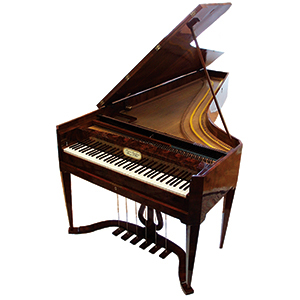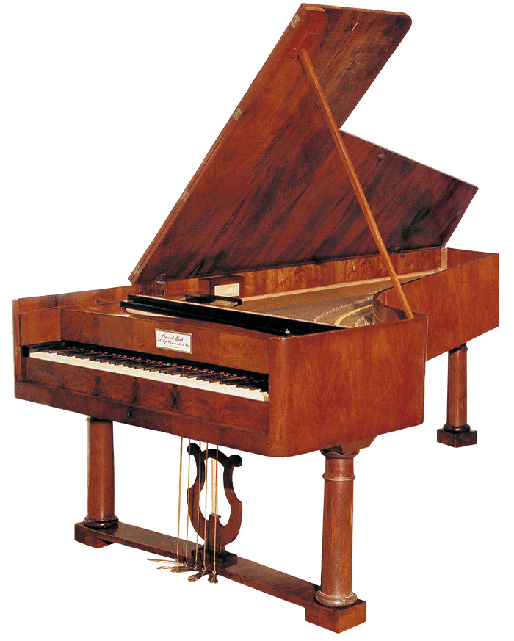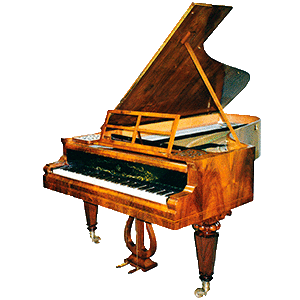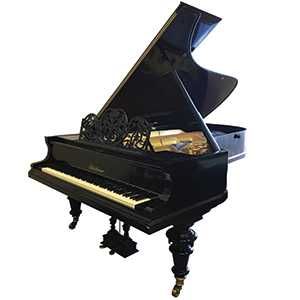1810 ROSENBERGER Fortepiano
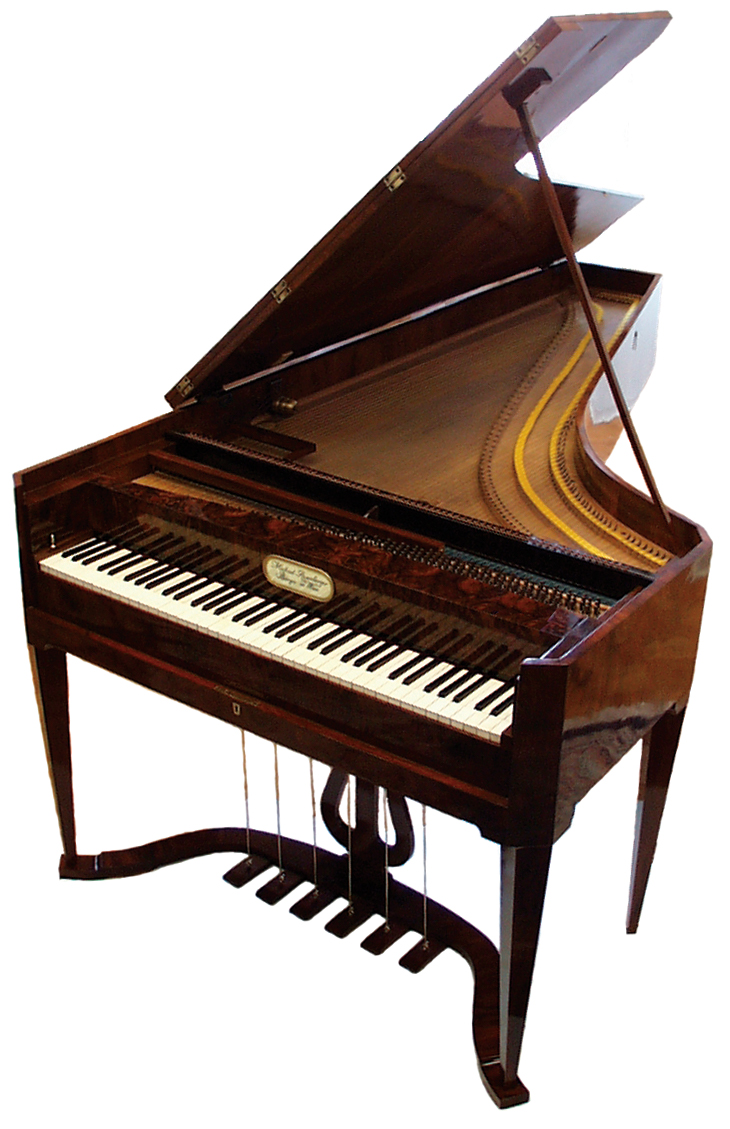
Built in Vienna c. 1810 by Michael Rosenberger (1766–1832). This instrument has an exceptionally transparent and luminous tone with extraordinary tonal variety. As with any Viennese piano of this time, it has none of the metal bracing one would find in a modern piano. Its soundboard is very thin and resonant. Its small hammers are covered with leather, and the action (the moving parts including key, hammer, and damper) is designed to be very light and quickly responsive. Its range is 6 octaves (FF-f4), and it has 6 pedals: shift (‘soft pedal’), bassoon (a special effect that places a light layer of parchment on the lower strings for a slight buzzing sound), two moderators (mutes that place a strip of felt between the hammer and strings), damper (to raise the dampers, allowing the strings to vibrate without the keys being depressed), and—everyone’s favorite—the Janissary pedal (a special effect that imitates the drum, triangle, and cymbal of Turkish military bands of the time). The piano’s white keys are covered in bone. The veneer is walnut. 26 of Beethoven’s 32 Piano Sonatas, and all 5 Concertos, were composed before this piano was built.
This piano was found in the 1990s at a farm in the Czech Republic, where it had spent possibly more than a century in the barn as part of a chicken-coop. It was restored, miraculously, by the Edwin Beunk workshop in Enschede, Netherlands.

